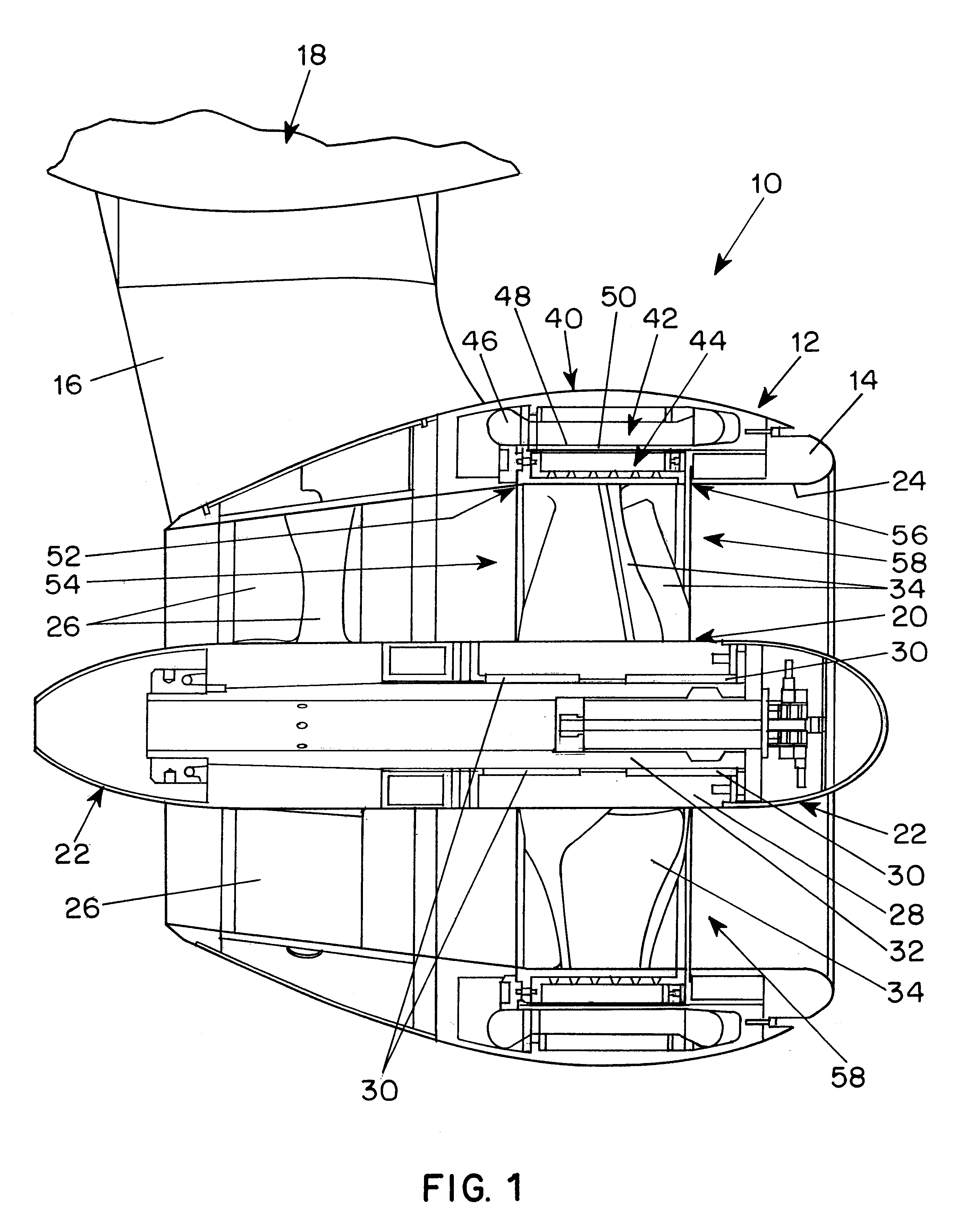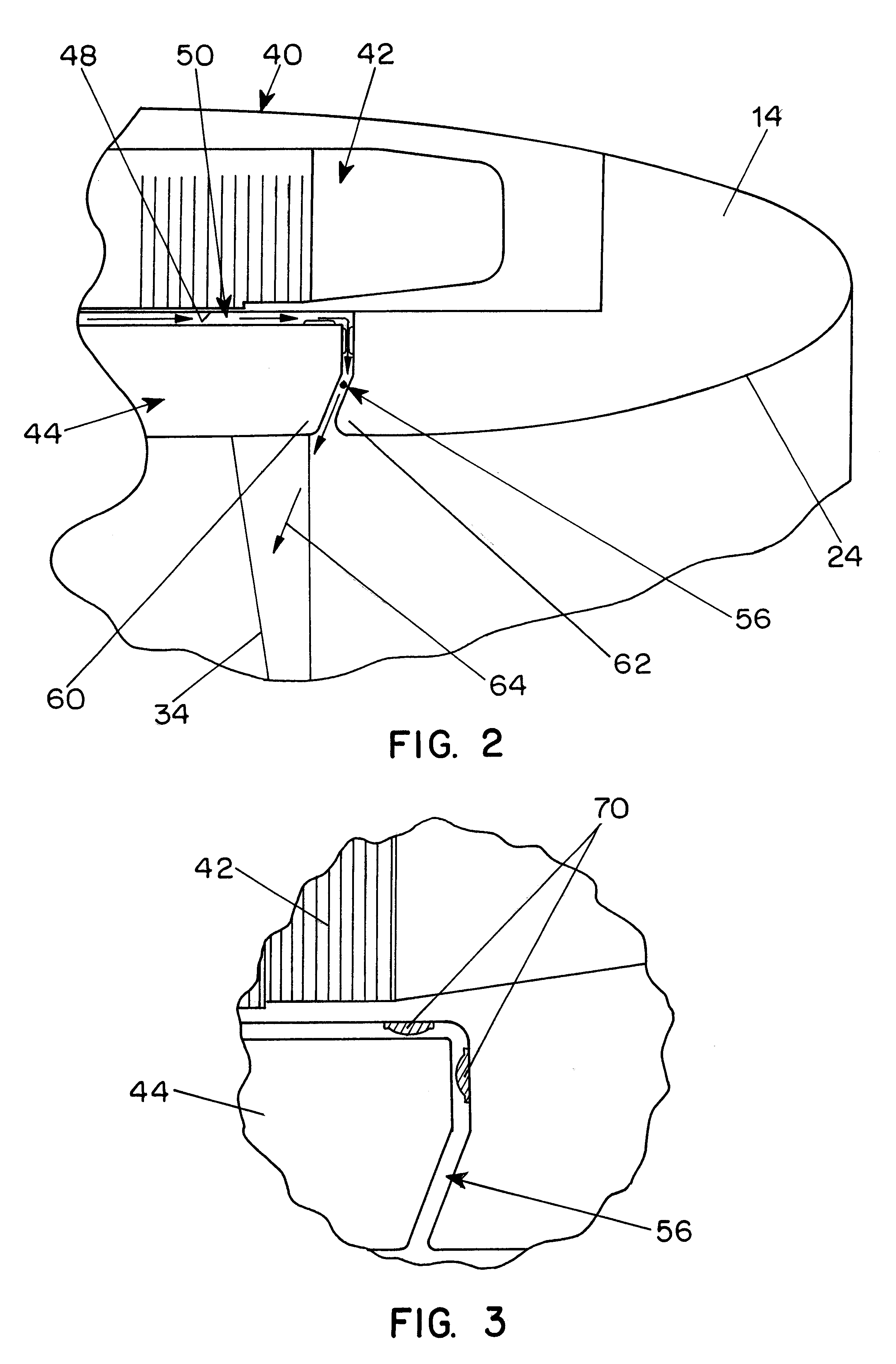Rim-driven propulsion pod arrangement
a propulsion pod and rim technology, applied in the direction of rotary propellers, marine propulsion, vessel construction, etc., can solve the problems of wear of the parts supporting the rotating blade sets, and achieve the effect of enhancing water wedge formation and minimizing vibration and wear
- Summary
- Abstract
- Description
- Claims
- Application Information
AI Technical Summary
Benefits of technology
Problems solved by technology
Method used
Image
Examples
Embodiment Construction
In the typical embodiment of a rim-driven propulsion pod arrangement 10 shown in FIG. 1, a pod 12 has a housing 14 supported by a strut 16 from an adjacent vessel 18 which is to be propelled by the propulsion unit. The pod 12 contains a rotor assembly 20 rotatably supported by a rotor support assembly 22 which is centrally mounted within a central duct 24 in the housing 14 by an array of support members 26 shaped in the form of vanes or blades to guide water emerging from the rotor assembly 20.
The rotor assembly 20 includes a hub 28 containing a plurality of radial bearings 30 rotatably supporting the hub on a central support shaft 32 of the support assembly and an angularly distributed array of blades 34 mounted on the hub and designed and shaped to propel water rearwardly through the housing in an efficient manner during rotation of the rotor assembly. The stationary blades 26 and the rotating blades 34 are designed as a set to cancel the swirl in the water driven by the rotating ...
PUM
 Login to View More
Login to View More Abstract
Description
Claims
Application Information
 Login to View More
Login to View More - R&D
- Intellectual Property
- Life Sciences
- Materials
- Tech Scout
- Unparalleled Data Quality
- Higher Quality Content
- 60% Fewer Hallucinations
Browse by: Latest US Patents, China's latest patents, Technical Efficacy Thesaurus, Application Domain, Technology Topic, Popular Technical Reports.
© 2025 PatSnap. All rights reserved.Legal|Privacy policy|Modern Slavery Act Transparency Statement|Sitemap|About US| Contact US: help@patsnap.com



